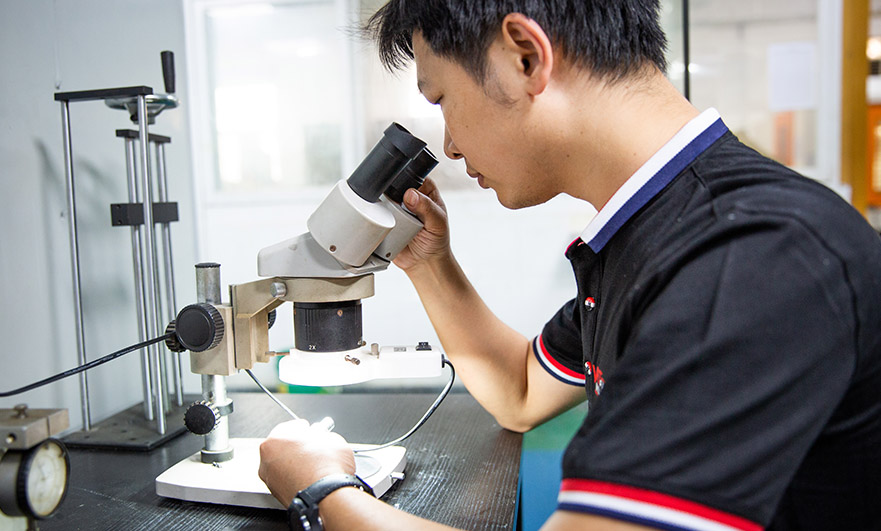15 years one-stop China custom CNC machining parts factory

Hey there I’m VMT Sam!
With 25 years of CNC machining experience we are committed to helping clients overcome 10000 complex part-processing challenges all to contribute to a better life through intelligent manufacturing. Contact us now
 263 |
Published by VMT at Aug 27 2021
263 |
Published by VMT at Aug 27 2021
Speaking of surface roughness, the first thing that comes to mind: "What is surface roughness"? Then a series of problems appeared. In fact, many people are troubled by some common problems. Below we VMT sorted out 10 common problems related to the surface roughness of custom machined parts.
1. What is Surface Roughness?
Answer: The surface roughness is a microscopic geometric feature composed of small spacing and peaks and valleys on the surface of a designated processed part. This is a microscopic geometric error.
2. Why is the Surface Rough?
Answer: The surface of custom machined parts formed by cutting or other methods will always have geometric errors due to plastic deformation, mechanical vibration, friction and other reasons during the custom machining process.

3. What is the Effect of Surface Roughness?
Answer: The surface roughness has an important influence on the wear resistance, the stability of the fit, the fatigue strength, the sealing performance and the measurement accuracy of the customized machined parts.
4. What is a Baseline?
Answer: The reference line for evaluating the surface roughness parameter values of custom-made parts is called the baseline. There are two types of baselines: contour least squares centerline and contour arithmetic mean centerline.
5. What are the Basic Evaluation Parameters?
Answer: The three height parameters are the basic evaluation parameters, namely the contour arithmetic mean deviation (Ra), the micro-roughness ten-point height (Rz) and the contour maximum height (Ry); the other three are additional evaluation parameters, respectively the contour The average distance of micro-roughness (Sm), the average distance between single peaks of the profile (S) and the length ratio of the profile support (tP).
6. What are the Measurement Methods for the Surface Roughness of Custom Machining Parts?
Answer: Comparison method, light section method, acupuncture method, interference method.
7. What is the Reference Value of the Surface Roughness of Custom Machining Parts?
Answer: For the obvious tool marks (surface roughness (Ra) value is Ra100/Ra50/Ra25), the processing methods include rough turning, rough planing, rough milling, and drilling.
For scars with few tool marks (surface roughness (Ra) values are Ra12, 5, Ra6, 3, Ra3, 2), the corresponding processing methods include fine turning, fine planing, fine milling, rough reaming, and rough grinding.
No processing traces can be seen, the derivative of the processing direction (surface roughness (Ra) value is Ra1,6,Ra0,8,Ra0,4). Corresponding customized processing methods include fine turning, fine grinding, fine reaming, and grinding.
Dark surface (surface roughness (Ra) value is Ra0,2,Ra0,1,Ra0,05) corresponding to customized processing methods include grinding, honing, super finishing and polishing.
8. What is the Actual Contour?
Answer: It is the contour line obtained by the intersection of the plane and the actual surface. According to the different intercept direction, it can be divided into horizontal actual contour and longitudinal actual contour. When evaluating and measuring the surface roughness of custom machined parts, unless otherwise specified, the actual horizontal profile is usually used as the reference, that is, the profile on the section perpendicular to the direction of the processed texture.
9. How to Choose the Surface Roughness?
Answer: The choice of surface roughness must not only meet the functional requirements of the customized machined parts, but also consider the economics and uses of the machining.
10. How Long is the Evaluation Period?
Answer: It is the length necessary to evaluate the contour, which can include one or more sampling lengths. Due to the uneven surface processing of the parts, in order to fully and reasonably reflect the roughness characteristics of the measured surface, multiple sampling lengths are required for evaluation. For the selected value of the evaluation length, see GB/T 1031-1995 surface roughness parameters and their values.
Summarize
This is an article about 10 frequently asked questions about the surface roughness of custom machined parts. I hope it can be helpful to you. We are a rigorous professional team that understands the surface roughness finish standards and correct usage methods. We provide you with high-quality CNC machining services and the best solutions, bringing you high-quality and exquisite products.
Ready To Start Your Next Project?
Get Instant Quote

Request a Free Quote
Send us a message if you have any questions or request a quote. We will get back to you ASAP!